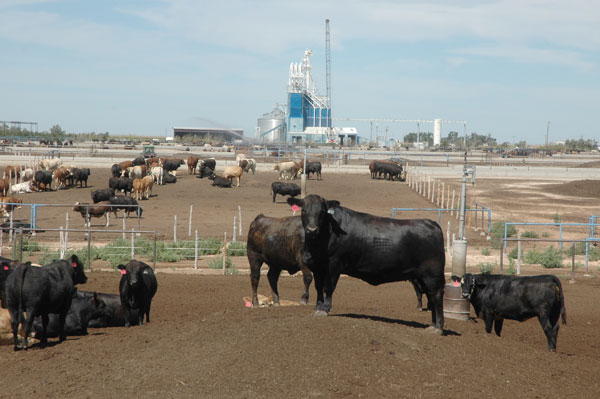Feedyard Biosecurity Plans Ready For Rollout
Ever since the outbreak of foot-and-mouth disease nearly decimated England’s animal agricultural industry, feedyard biosecurity in the U.S. has been an issue but conducted under the radar. A Department of Homeland Security project has elevated the issue to a new level.

In an effort to help Cattle Feeding Country of Texas, Oklahoma and New Mexico better prepare for disaster, a coalition of local, state and federal organizations recently completed an 18-month effort designed to enhance the regions resiliency against natural and manmade threats.
Two tragic events came together in 2001 to elevate the need for biosecurity in U.S. agriculture—the tragedy of 9-11 and a devastating outbreak of foot and mouth disease in England. Since then, there’s been ongoing conversation and focus on how U.S. animal agriculture can be better prepared to prevent manmade disasters, such as the introduction of a foreign animal disease, and to mitigate the effects of both manmade and natural disasters, says Ben Weinheimer, vice president of the Texas Cattle Feeders Association (TCFA) in Amarillo, TX.
In the years since 2001, there have been a number of training and emergency management exercises designed to keep the issue relevant with a core group of emergency management officials, first responders, livestock organizations and local, state and federal government officials. Those efforts have largely flown under the radar.
That will likely change with the completion of a Regional Resiliency Assessment Program (RRAP) project in the Texas Panhandle. RRAP is a program of the Department of Homeland Security, intended to strengthen infrastructure critical to the welfare of the U.S. to better withstand acts of terrorism or of natural disasters, according to John Keil, regional services director for the Panhandle Regional Planning Commission in Amarillo.
The assessment project first identified gaps in the region’s animal agriculture infrastructure, Weinheimer says. Those gaps then became the focus of the 18-month project.
Biosecurity and business continuity in the aftermath of a disaster were identified as potential gaps, he says, and template documents have been prepared that will help individual operations better prepare. These templates can be customized for each feedyard, Weinheimer says, as well as for dairies and calf ranches, swine operations, trucking companies that haul livestock and feed, and auction markets.
With the project’s completion, it now becomes the responsibility of the various livestock organizations and local and regional governments to keep things moving, Weinheimer says. “We will now go down a path of education and implementation of the plan,” he says.
The templates will give feedyards and other animal ag operations a better understanding of both what routine biosecurity measures need to be implemented, as well as heightened biosecurity efforts should a foreign animal disease disaster occur, Weinheimer says.
The third focus of the effort is on local and regional governments. “That includes folks like emergency managers and county judges, so they have an understanding of how they fit in a foreign animal disease outbreak,” Weinheimer says, “especially as it relates to things like a stop movement order for traffic or livestock, and helping to implement the strategies of the Texas Animal Health Commission and USDA at the local level.”
Ultimately, Weinheimer says the regional response plan helps both livestock producers and governments have a better understanding of how, in the course of an event, all the plans will align and fit together relative to biosecurity, business continuity, mitigation and recovery.
“These RRAP tools will result in resiliency improvements to livestock operations wherever they’re implemented,” Keil says. “If we can build on what has been started with the RRAP by taking the conversation into other states, we can make serious strides in protecting an industry that is critically important to the entire nation.”
About the Author(s)
You May Also Like


.png?width=300&auto=webp&quality=80&disable=upscale)
